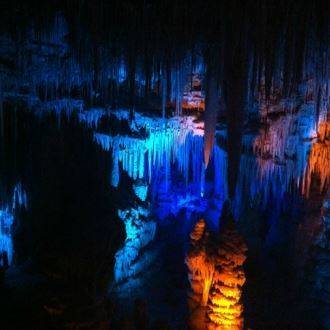Tel Bet Shemesh
Hiking
Tel Beit Shemesh is the ancient Beit Shemesh, at the foot of the mound of Nahal Sorek, which is a natural border between the tribal lands that inhabited the Tel: Judah, Benjamin, and Dan.
From the vantage point on the mound, you can imagine the convoy with the Ark of the Covenant coming from the west through Nahal Sorek, while the people of Beit Shemesh harvested wheat in the valley.
During the time of King Solomon, Beit Shemesh became a central city in one of his districts. During the reign of Judah, Beit Shemesh was one of the main cities of the kingdom, where Amaziah, King of Judah was captured by Jehoash King of Israel.
These and other wars exhausted the power of the Kingdom of Judah and the Philistines took advantage of the cracks in the kingdom's weakness. They invaded the cities of the Lowlands and conquered Beit Shemesh.
Beit Shemesh reached its peak of importance during the First Temple period and then went downhill.
Archaeological excavations were conducted about 100 years ago. Initially, the excavations focused on the fortifications of the city and the wall that surrounded it, and its construction dates back to the Canaanite period, parts of which were rebuilt at the beginning of the Kingdom of Judah. This can be seen at the gate on the north-end of the city.
A water channel that was once considered a drainage channel was discovered beneath the gate, but today it was discovered that it was part of a water plant that was built in the city.
The Water Plant:
The large water plant that was built in the city was a source of water for its residents. The entrance building to the reservoir is in the form of a deep square shaft, leading to a staircase, some of which are built of stone and some of which are hewn in the rock.
The water reservoir was hewn in the form of a cross, with four halls measuring 9 meters long and 6 meters high. The total volume of each hall reached about 800 cubic meters of water. The reservoir absorbed rainwater that was drained from the streets and from the gutters above and around it.
The Southern Gate:
A gatehouse was exposed at the southern end of the Tel and it is dated to the Canaanite period and to Israeli settlement there. At one point this gate was sealed and out of use, and during the reign of the monarch only the northern gate was used.
- Type
- Hiking
- Region
- Judea and Samaria
- Near to
- Beit Shemesh
- Length
- About 1 km
- Recommended season
- Spring, Summer, Autumn, Winter
- Difficulty level
- Easy-Medium
- Starting point
- A small parking lot at the top of the hill (map)
- Ending point
- A small parking lot at the top of the hill (map)
- Special equipment
- Walking shoes, hat, water, sunscreen
- Parking
- Free Parking
- Bathing water
- Bathing water
- Suitable for children
- Suitable for children
- Picnic suitable
- Picnic suitable
Similar trails






A new light shines in the Stalactite Cave

Nearby attractions







Nearby restaurants



Sha'ar Ha'ir Mall, Beit Shemesh

Bleecker Bakery- Beit Shemesh



